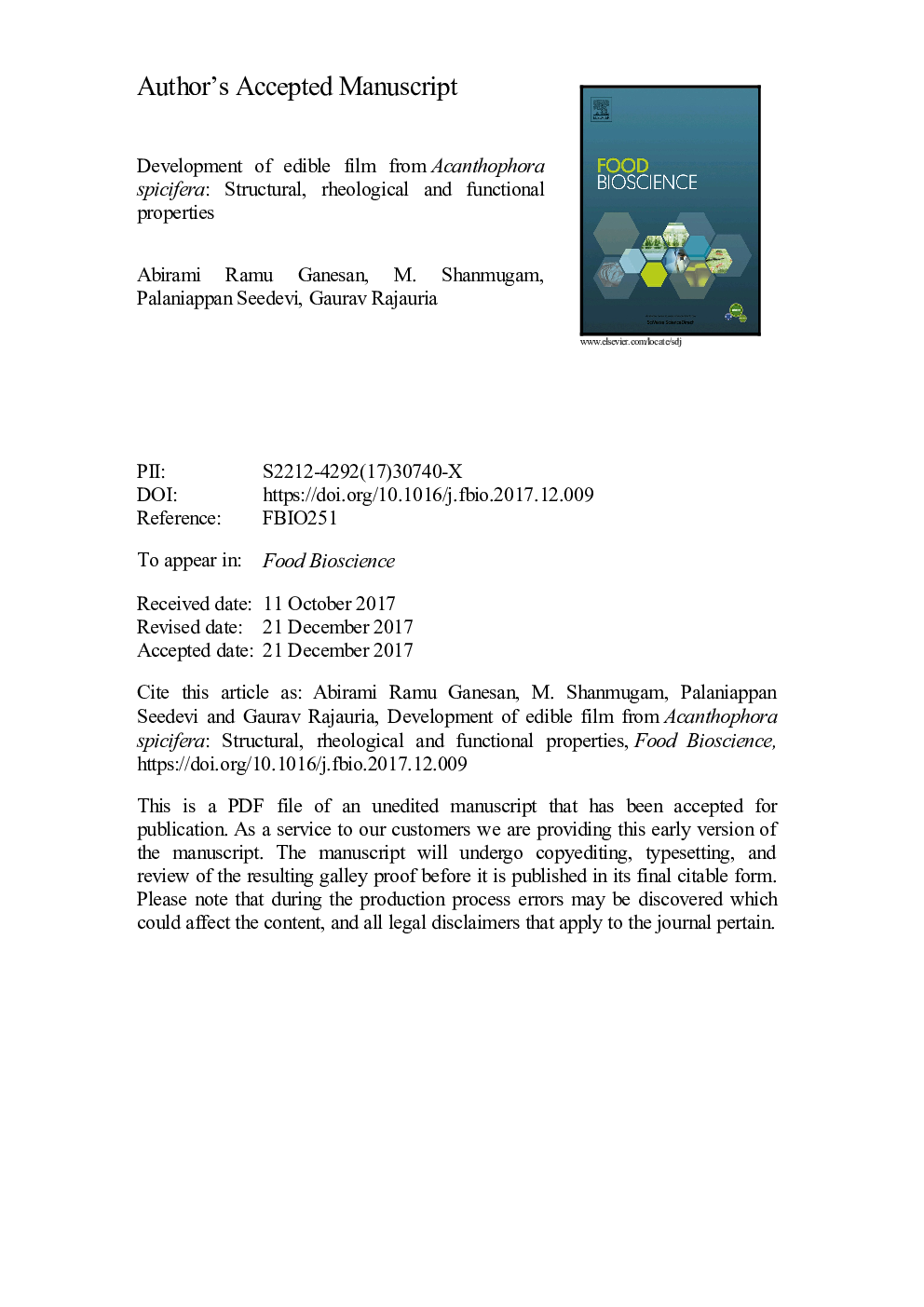| Article ID | Journal | Published Year | Pages | File Type |
|---|---|---|---|---|
| 6488851 | Food Bioscience | 2018 | 26 Pages |
Abstract
The sulfated polysaccharide was obtained from Acanthophora spicifera studied for potential function as an edible film in food application. The chemical characterization of sulfated polysaccharide showed 88.26% total carbohydrate, 14.8% ash with no protein. Hydrogen, nitrogen and sulfur content were 38.08%, 7.04%, 8.04% and 0.28%, respectively. GC-MS analysis showed the presence of monosaccharide fractions like galactose (60.2%), 3,6-anhydrogalactosyl residue (21.8%) and xylose (5.8%). The molecular weight of sulfated polysaccharide was 47 kDa against dextran sulfate 50 kDa. The H NMR spectra confirms β-D-galactose linkages at δ = 4.69, 4.46, 4.27, 4.02 ppm and singlet peak at 2.32 ppm corresponds with xylose group. Two different proportions of edible films were developed from sulfated polysaccharide using 20% and 30% glycerol. FT-IR spectra show the presence of ester sulfate and glucuronic acid group in the developed edible films. The two formulated films possess endothermic peaks at 114.78-129.94 °C under differential scanning calorimetry. The thickness of the films was varied between 0.102 and 0.124 mm with opaque characteristics. The water vapor permeability (WVP) of films was ranging from 8.82 to 11.92 à 10â8 g mâ1 Sâ1 Paâ1 with higher tensile strength (32.78-47.56TS) and low percent elongation at break (8.98-10.24%E). The film samples showed stronger antibacterial activity against L. monocytogenes (46.77-72.98 mm2) than gram negative bacteria E.coli (36.72-42.14 mm2), and S. typhimurium (44.98-58.64 mm2). Therefore, the developed films showed better flexibility and bacterial resistant property which could be act as an active food packaging material.
Related Topics
Physical Sciences and Engineering
Chemical Engineering
Bioengineering
Authors
Abirami Ramu Ganesan, M. Shanmugam, Seedevi Palaniappan, Gaurav Rajauria,
